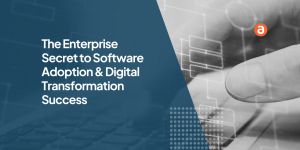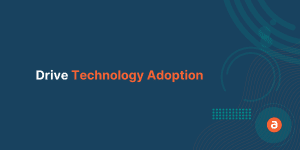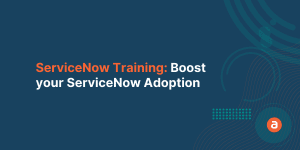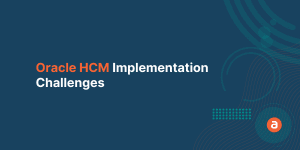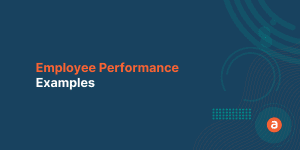If an organization wants to create an employee Learning and Development plan that provides good returns from investments, it must focus on the relevancy of learning content and method. They must be aware of changes happening within the industry as well as potential changes that can occur in the future.
Employee Learning and development plans assist your employees in gaining new skills for their existing jobs while also broadening their knowledge and skills for different roles within the organization. Concentrate your early L&D efforts on the workforce, not only to improve their existing talents but also to invest in leadership and management training when they’re ready.
A recent survey states that 94% of the workforce would stay at a company longer if it invested in their Learning and Development. This means that employees need more than just financial incentives to stay with the company.
Steps to Create a Perfect Employee Learning & Development Plan
Here are the 5 Steps to Create a Perfect Employee Learning and Development Plan for your Organization.
- Establish realistic goals
- Perform skills gap analysis
- Talk to your employees
- Track employee progress
- Rewards and recognition
1. Establish realistic goals
If there’s no structure to your L&D plan, it usually falls apart. The plan should be SMART – Specific, Measurable, Realistic, Actionable, and Timely. Without being specific or measurable, it’s hard to quantify if employees meet their personal goals and the company’s goals.
The L&D plan must provide personalized employee training for their professional advancement. Organizations must allow employees to take charge of their own professional development, with supervisors serving as facilitators that provide direction, materials, and feedback.
Establish clear organizational goals and objectives. This makes your employee think about how they contribute to the organization’s growth while also progressing through their personal growth. Keeping the goals and objectives in mind, set up a definitive and time-sensitive way to get there.
Assess your employee’s strengths and weaknesses to find areas of improvement. Overcome the barriers to Learning and Development continue taking the steps that will assist you and your employees to make the most out of L&D initiatives.
2. Perform Skills Gap Analysis
Determine which employees require more training and prioritize training activities to support them. An overall analysis of the employees’ skills will help organizations understand the areas where a majority of employees are lacking. This insight can be used to invest in training that focuses on those specific skills.

This training needs analysis must place your organization’s goals at the forefront. Evaluate what you are already doing well and what areas need improvement to help you streamline employee Learning and Development efforts.
Some employees may already have Learning and Development goals in mind but are unsure about how to address this or if their plans will be supported by the firm. Some might also feel reluctant to learn a new skill.
For example, John may be an expert in sales, but he is not interested in learning Excel or the budgeting process. John may stay apprehensive until you convince him that such talents are essential for him to advance to the next level (sales management). Setting a personal growth objective for the employees can motivate them to learn the necessary skills.
3. Talk to Your Employees
It’s a great idea to check in with your employees monthly with one-on-one meetings focused on their personal goals and development. You can use these one-on-one sessions to review your employees’ development, recognize and reward their accomplishments, and discuss what’s next for them.
During these meetings, you can get their feedback to understand the difficulties they are encountering in accomplishing their goals.

The objective of these regular check-ins is to maintain open lines of communication so that you can collaborate on making changes to the employee Learning and Development training.
Even if both you and your employee believe that no adjustments to the plan are necessary and that everything is working smoothly, take the time to review it since even a brief, casual check-in promotes engagement and relationship.
Constant communication shows employees that you care about them and their personal progress. It also assures them that you will continue to support them in their endeavors. These meetings help the employee, as well as the employer, understand how the employee’s personal growth can directly contribute to the company’s future.
4. Track employee progress
When performance is measured, performance improves. To create an effective employee Learning and Development plan, you must select KPIs to measure its effectiveness.
Employees’ involvement is key in each step. After you consult with them about their skillset and career objectives, urge them to evaluate their work and ask them for feedback.

Don’t make it your end goal to provide X number of hours of training to an employee or ensure they earn an assessment score of Y. Those numbers don’t show the real-world impact of your training on employees. Instead, use metrics to track their competence in an area after receiving training.
Plan your training method only if you have decided on what KPIs will be used to measure its success. Analyze the measurements to make improvements to your plan and make this an iterative process. Save time and money by making sure your employee Learning and Development plan is optimized for measuring, tracking, and evaluating.
5. Rewards and Recognitiaon
Measure each employee’s progress and learning to assess any changes in the learning modules. Follow the ADDIE (Analysis, Design, Development, Implementation, and Evaluation) framework. Use KPIs to evaluate the success of the course and adjust it as needed.
Employees that progress, as expected, must be rewarded for their efforts. It gives them a great incentive to continue striving. It motivates them to complete the development program and also to participate in future development programs, instead of just focusing on their day-to-day duties.

These are the 5 steps to create a perfect employee Learning and Development plan. Assess what Learning & Development method works for the majority of your employees. Gamify learning activities to keep employees interested in the process and provide rewards to high performers.
According to Gallup’s 2021 workplace report, only 20% of employees working for an organization are engaged in their work.
Having learning techniques that combine various proven techniques and one that adapts to changing work environments can help increase your engagement rate.
Invest in training tools and platforms that can seamlessly integrate with other software and immediately provide value to your employees. This tech platform should be infused with modern technology to deliver the best learning experience possible.
A Digital Adoption Platform is one of the few modern training tools that has reinvented training delivery. It helps the employees on their job and finds their way through complex applications in real-time.
However, you need a proper Learning and Development Plan that can help you make the most of these modern technologies. To solve this problem, we have designed an L&D plan template that will help you to get started and customize it to your needs.

